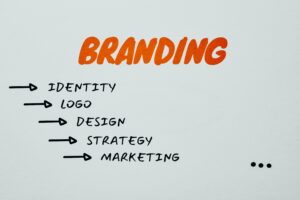Michael Thomas Sunnarborg said, “Smart work is learning to prioritize, plan, & focus our energies with meaningful intent,” & this we believe is the essence of work-life integration.
The pursuit of work-life balance has been a longstanding mission for professionals across diverse fields. In the backdrop of a consistently challenging, 24/7 hustle culture, the boundaries between work & life often fade, highlighting the necessity for a more seamless integration of the two.
Creating a balance between work & life is a unique process for each of us. Here is an activity that will help you customize your plan for integrating work & life to align with your unique, individual goals.
Use the “Four Circles” exercise from “Leading Your Life You Want: Skills for Integrating Work & Life.” Create a “four-way attention chart” for work, home, community, & self. Your daily goal is a “four-way win.” Follow these steps:
- Ensure your goals in the four circles add up to 100%, prioritizing values based on task importance.
- Arrange circles for compatibility; the closer & more overlapping, the better.
- Review & consider changes for improved compatibility.
- Resize the circles to align with your life areas, instilling harmony amongst your goals.
In today’s tech-driven era, instant connectivity has become a norm, & professionals across industries are seeking ways to make the most of their time. This has propelled work-life harmony into the spotlight, becoming a top priority for HR leaders & managers. Unlike the old-school idea of work-life balance, which envisions a strict divide between work & personal life, work-life integration aims for a more seamless & fluid relationship between the two, recognizing that they can coexist harmoniously.
Understanding Work-Life Integration
Work-life integration is a mindset that recognizes the interconnectedness of work & personal life. Employers need to acknowledge that their employees are individuals with multiple responsibilities, interests, & priorities. Leaders must chart an attainable & fulfilling path toward finding stability between personal & professional commitments.
Although balance & integration both aim to achieve the same goal, the difference lies in their approach. While on one hand, work-life balance draws rigid lines between personal & work hours, work-life integration aims to bring them both together, allowing professionals to address their responsibilities when it suits them best.
How can employers promote healthy work-life integration in their organization?
1. Flexibility as a Foundation:
One of the core aspects of successful work-life harmony is flexibility. HR leaders & managers should promote flexible work arrangements, such as remote work options, compressed workweeks, or flexible hours. This empowers employees to tailor their work schedules to better align with their personal commitments & avoid any work-family conflicts.
2. Clear Communication & Expectations:
Open & transparent communication is crucial. Clearly articulate the organization’s expectations regarding work hours, availability, & communication norms. Establish a culture where employees feel comfortable discussing their individual needs & finding collaborative solutions.
3. Technology for Empowerment, Not Overload:
While technology enables connectivity, it should be a tool for empowerment, not a source of endless workload. HR leaders should advocate for tools that enhance productivity & allow employees to stay connected anytime from anywhere, like cloud connectivity, live file sharing, etc, without causing stress or burnout. Implement guidelines for after-hours communication to respect personal time & encourage employees for balancing work & family life.
4. Emphasizing Results Over Hours:
Shift the focus from hours worked to results achieved. This change in mindset promotes a results-oriented culture where employees are evaluated based on their contributions & outcomes rather than the number of hours they spend at their desks.
5. Employee Well-Being Programs:
Investing in employee well-being programs is a proactive way to support work-life fit. These programs can include mental health initiatives, stress management resources, & wellness activities. Prioritize initiatives that resonate with the specific needs & preferences of your workforce.
6. Training & Development:
Provide training on enhancing time management, developing resilience, & boundary-setting. Equip employees with the skills & tools they need to manage their workload effectively & establish healthy boundaries between work & personal life.
7. Leading by Example:
HR leaders & managers play a pivotal role in promoting this synergy. Lead by example, demonstrating a commitment to your own well-being & encouraging a healthy balance among your team members. When employees see leadership embracing this integration, it fosters a culture that values the whole person.
8. Customizing Benefits Packages:
Tailor benefit packages to align with the wide-ranging needs of your employees. This could include parental leave policies, caregiving support, or financial wellness programs. Recognize, accommodate & empathize with the various life stages & circumstances of your employees.
9. Continuous Feedback Loops:
Establish continuous feedback mechanisms to assess the effectiveness of your initiatives. Solicit input from employees through surveys, focus groups, or one-on-one discussions. Use this feedback to refine & adapt your strategies over time.
10. Celebrating Achievements, Big & Small:
Acknowledge & celebrate achievements, both professional & personal. Recognize the accomplishments of your employees outside of their work responsibilities. This creates a positive & supportive environment that values the entirety of an individual’s life.
Apart from incorporating work-life balance in HRM strategies, we must successfully fuse this harmony into our lives. Practicing self-awareness, mindfulness & boundary setting can enable us to achieve this equilibrium.
In the never-ending journey of embracing balance, every step contributes to a more engaged, & fulfilled team. Take your first step towards unlocking the full potential of your organization & reach out to our experts today!




